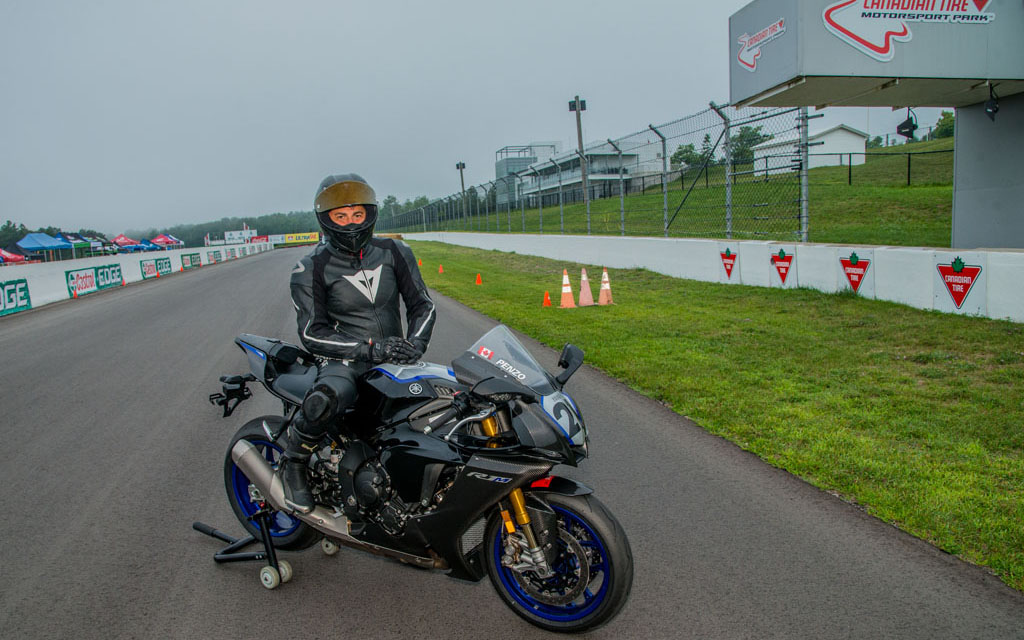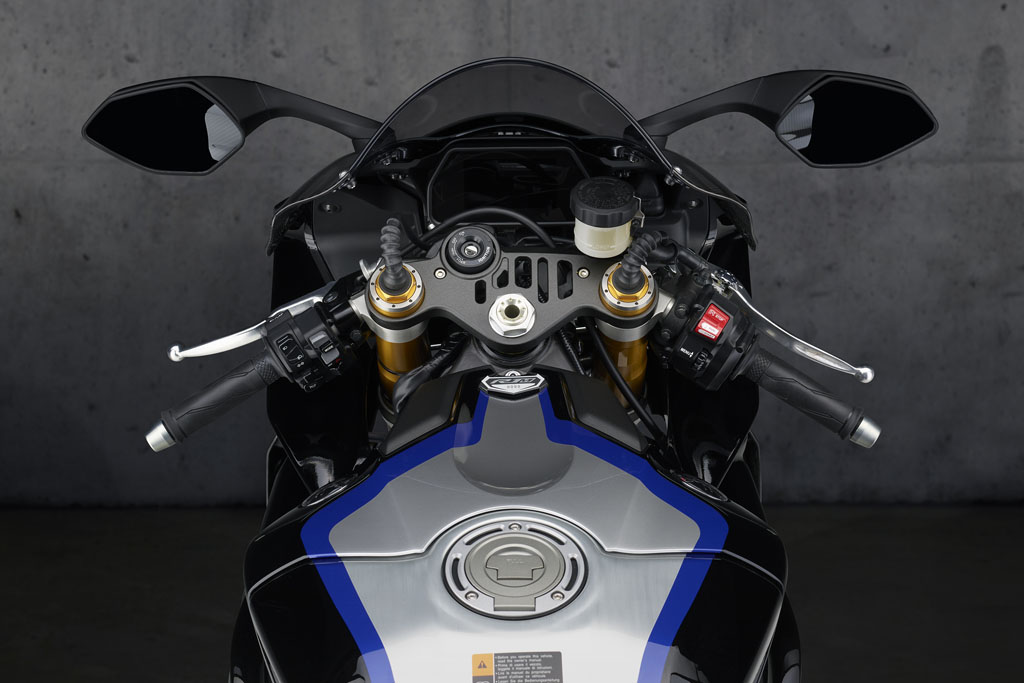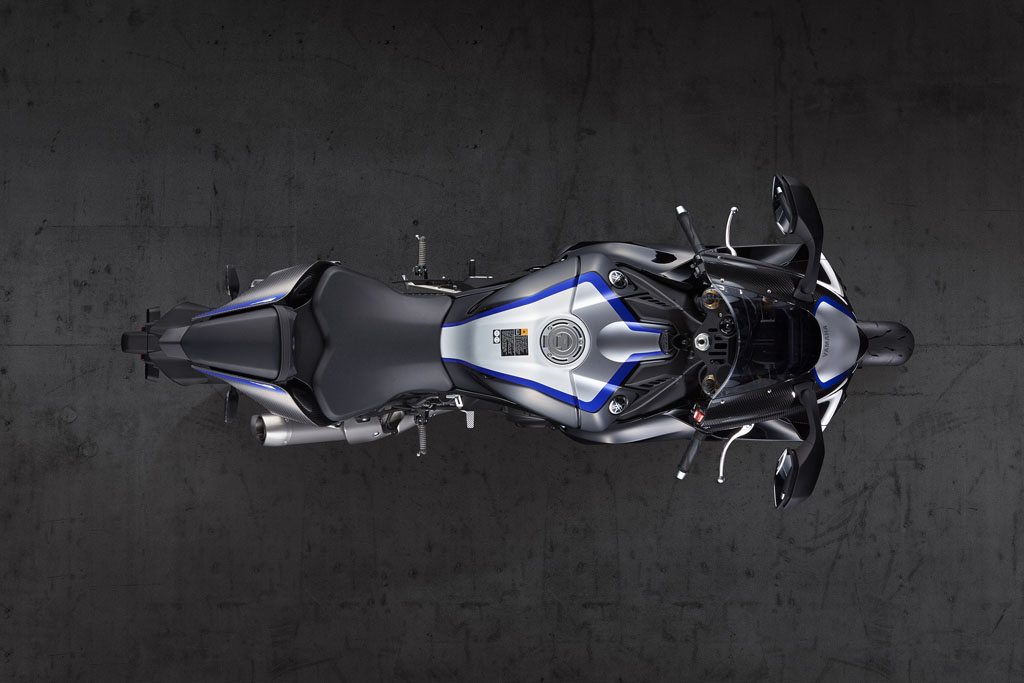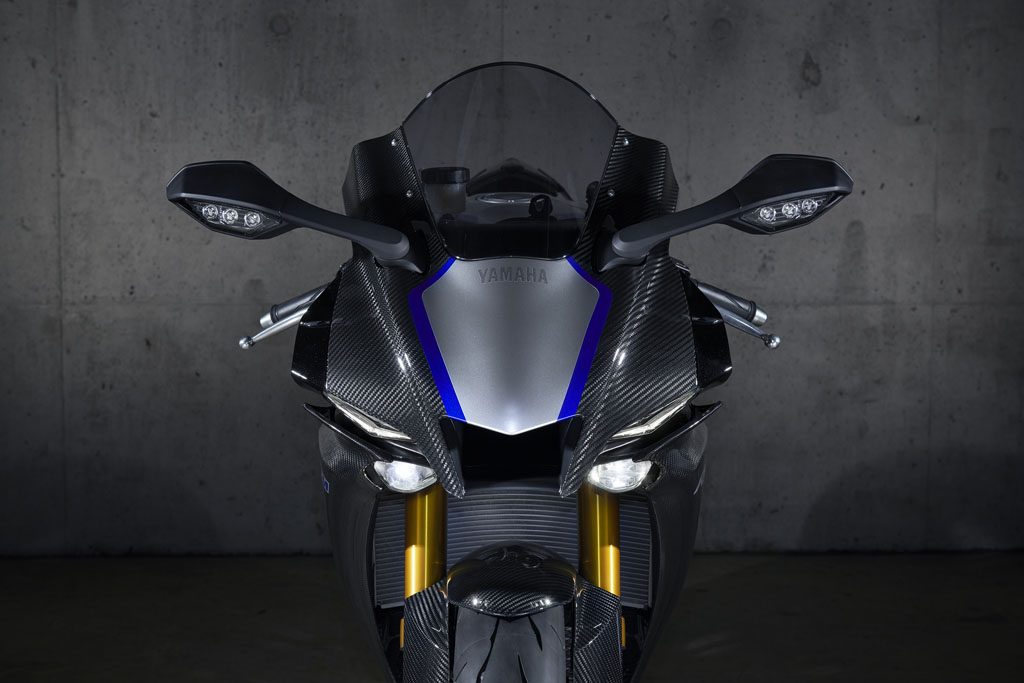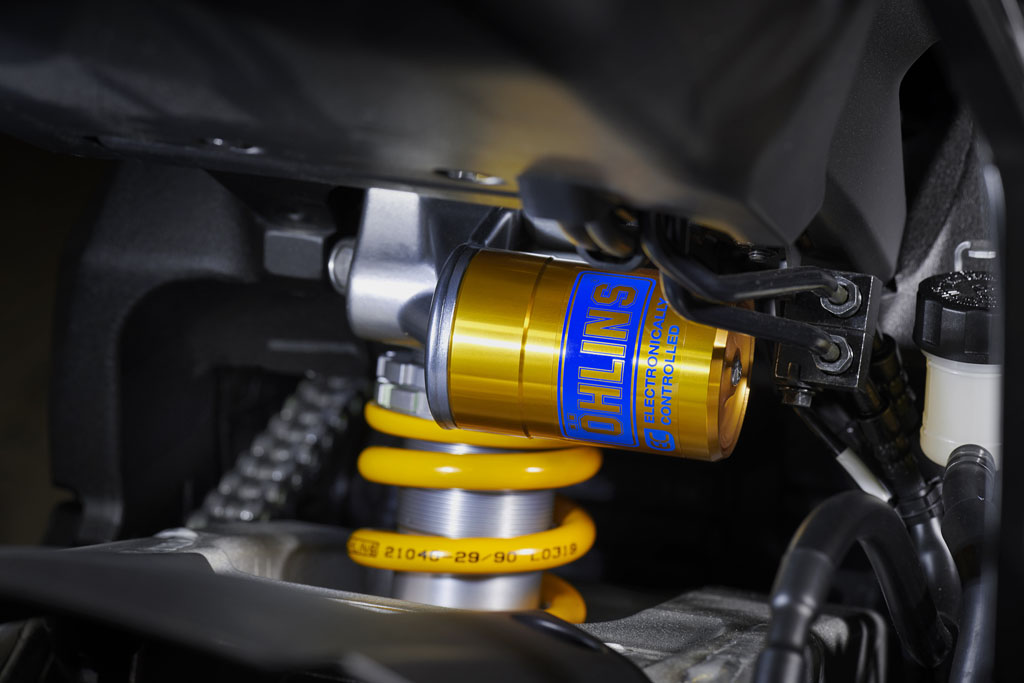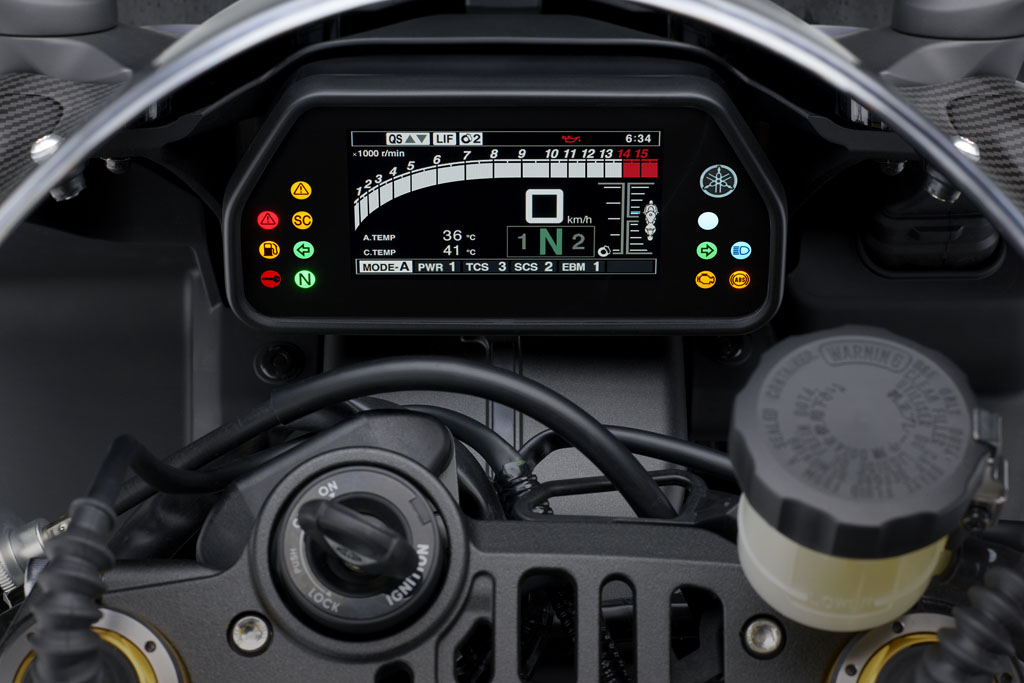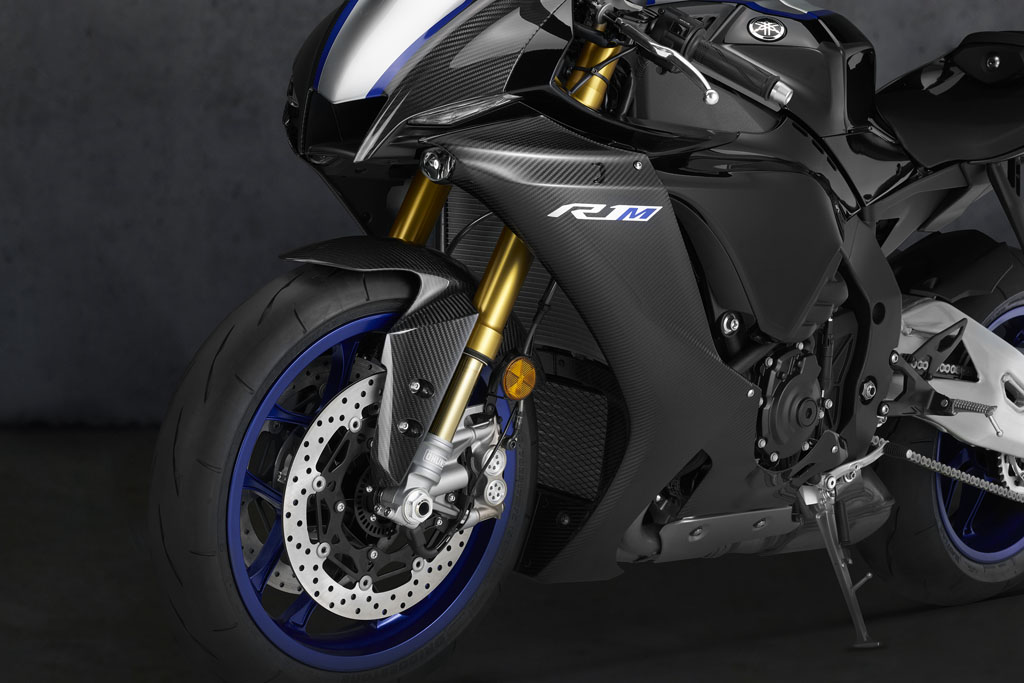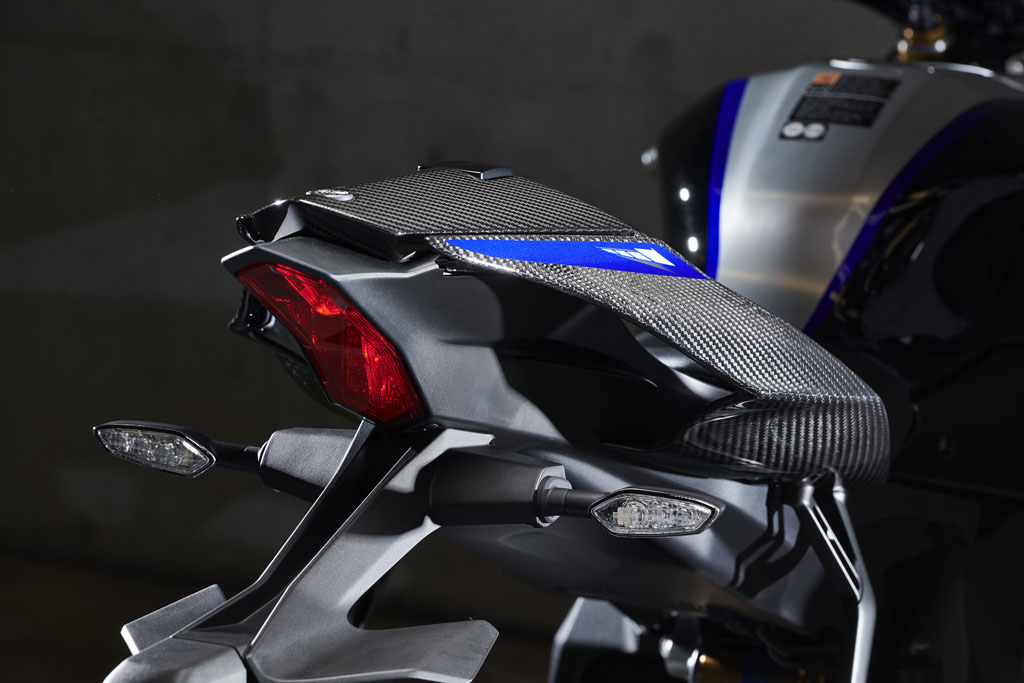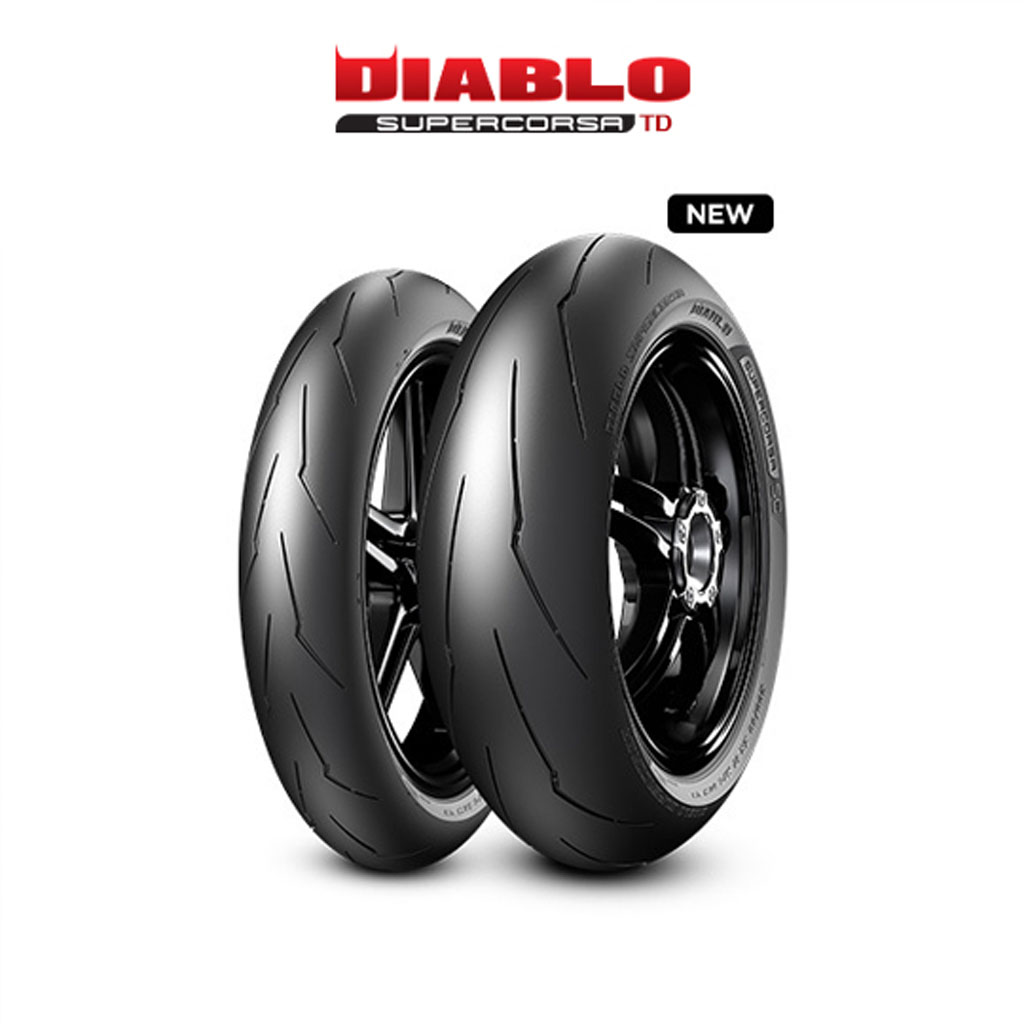Close Enough
A FLAGSHIP SUPERBIKE ON COUNTRY’S FASTEST RACE TRACK
The R1M is Yamaha’s latest open displacement flagship sport bike. A MotoGP- inspired engine configuration provides the heartbeat, a 6-axis IMU-based electronics system controls it 125 times per second, and wireless connections are available for remote tuning capabilities.
We all know I am not Valentino Rossi—but what happens when a “retired” pro roadracer gets to test this real-life descendant of his ride?
THE WEEKEND WARRIOR SCENE
The first thing is a request to enter the R1M into CSBK’s Pro Superbike race for a fun PR thing. We are at Canadian Tire Motorsport Park; it is our country’s fastest racetrack, and my personal favorite. Yamaha Canada approves, but we enter just the track day weekend, and this turns out perfectly.
The first thing is a request to enter the R1M into CSBK’s Pro Superbike race for a fun PR thing. We are at Canadian Tire Motorsport Park; it is our country’s fastest racetrack, and my personal favorite. Yamaha Canada approves, but we enter just the track day weekend, and this turns out perfectly.
Just preparing for the weekend triggers a flood of forgotten memories to promptly return, again. The time, money and effort required to race-prepare a motorcycle, plus be physically and psychologically competitive at national level, is significant. The traditional pre-weekend jitters, except now while combined also with older body aches, and then a call to let me know Pro Superbike racer Jeff Williams had a life-threatening accident that has him in ICU. No need for me to race; just being here on Yamaha’s R1M to go as fast as I feel like, carefully, is a blessing.
THE BIKE
Yamaha’s R1M is trick. Just look at the carbon bodywork, electronically controlled suspension, and aggressive looks, and you get the picture. Turn over the engine, let it rev up to help with heat cycles during break-in, and I can tell this is a ferocious motor by how readily the revs come down when releasing the throttle.
For 2020, both the R1 and R1M share an aluminum tank, air intake, and Deltabox frame. Revised bodywork improves aerodynamics by over five percent, and upgraded suspension components make everything better. Its MotoGP-inspired motor with crossplane crank and uneven firing order bark in unique improving harmony as RPMs increase, and it prefers to have the clutch pulled in rather than to coast at idle.
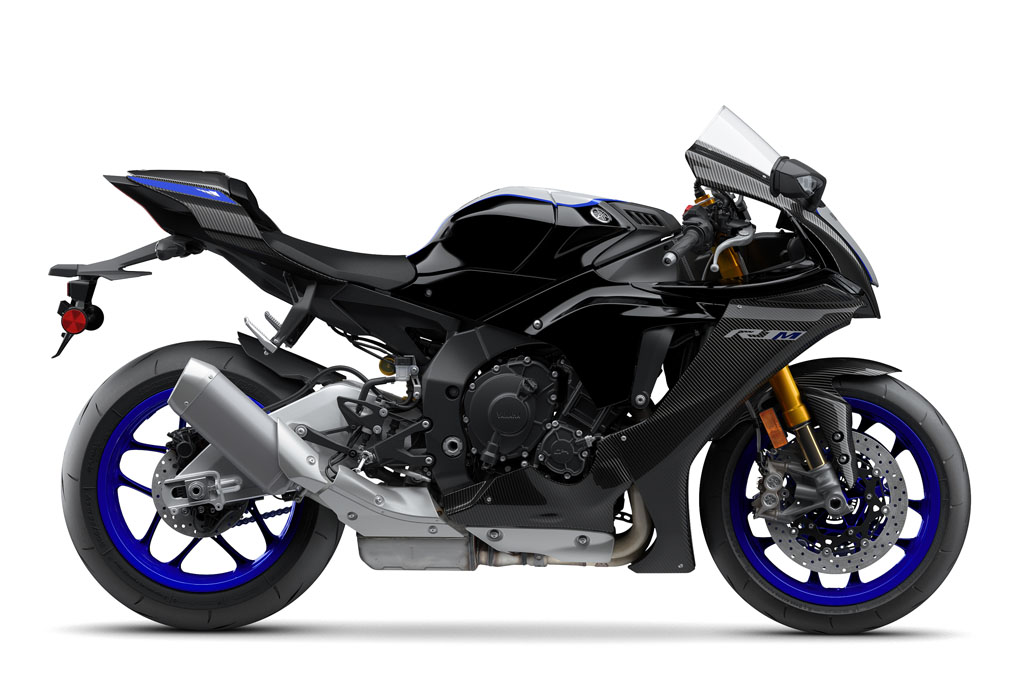
The R1M is the first to come installed with Öhlins’ latest spec Electronic Racing Suspension, and includes carbon fibre bodywork, plus a Communications Control Unit (“CCU”). The CCU has a GPS and a vehicle logging indicator which I connect to from my smartphone and can access through a fully functional 16-channel downloadable app; it feels almost like being on a MotoGP bike with techs somewhere behind the scenes to validate rider- feedback and tweak things from afar. Anybody seen Rossi?
The owner’s manual contains 55 pages regarding just the R1M’s electronics suite plus instrument and control functions. There are four ride modes, each with default settings for power, traction control, brake control, ABS, slide control, wheelie control, engine braking, quick shifter, etc. There are literally hundreds of adjustments available through the TFT display, including choosing between track and street display with options on what appears how in each.
And Electronic Racing Suspension (ERS) provides independent control of compression and rebound damping. The R1M has the electronic adjustments and outright power available to make me feel proud to have and admire, and I am looking forward to testing it. Given this is Yamaha’s flagship, it is a safe bet that some features will trickle down through Yamaha’s model line-up for all to enjoy soon.
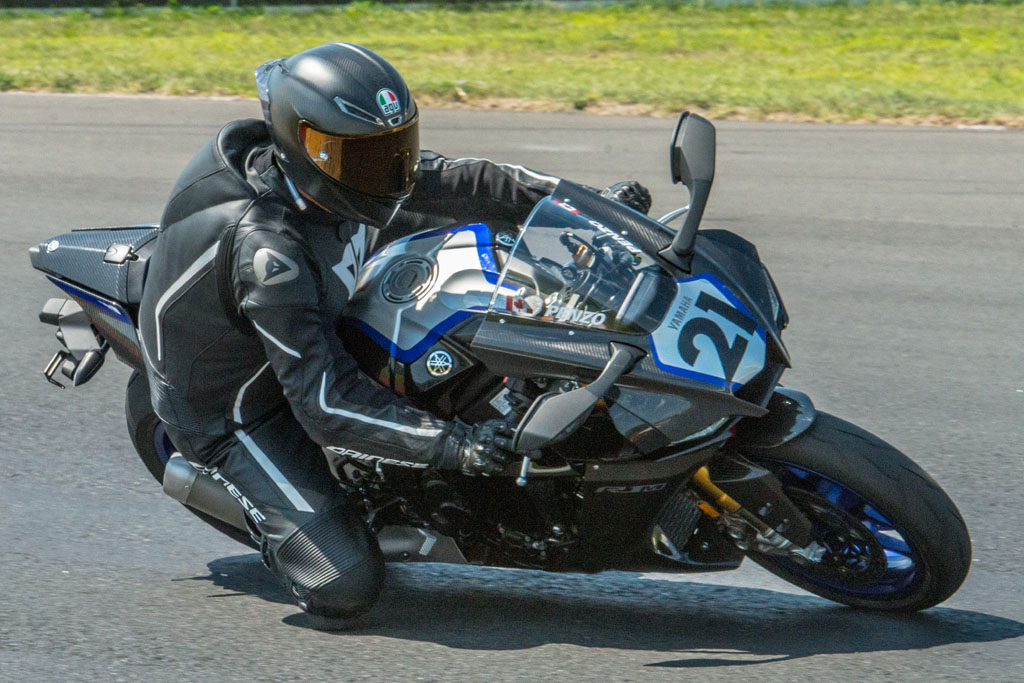
THE RIDE
This R1M is put into use specifically for this track test on a rush basis, and no license plate for street use is provided. Jump aboard, and it feels light with a perfect stance for knee- scraping pleasure. Just like when I rode both the Kawasaki and Ducati MotoGP bikes at Valencia, it is designed to go fast and feels like it wants to stall at low RPM. Push it around in the pits, and it has a notably wide turning radius. But it clearly later tells me to grow a pair, practically begging for later turn-in and faster mid-corner speeds.
Break-in recommendations ignored aside, the first session is spent in Mode C because it accesses the same peak power, but in gentler fashion than Mode A—the higher the mode letter or setting number within it, the higher the intrusion or control for that particular technical feature. Handlebar controls take a while to get used to but make sense, and I find the lap timer being most useful while riding.
My ex-crew Stu Gilbert is out to help this weekend, and we leave it with default settings progressing through to Mode A where it is left for a few sessions. He reads up on the electronics and plays with TFT display modes between stints, while I improve lap times by a second or so every time out.
Lap times are respectable, but a good way off from my lap breaking pole position qualifying time on an air-cooled twin while racing in CSBK’s Pro Thunder class here in 2007. Yes, I am older, a little heavier and a bit rusty, but something else seems off. To my mind, a similar displacement stock inline-four should go at least 4 seconds faster than a race- prepared air-cooled twin, so we continue fondling the R1M’s electronics throughout the weekend to find time—I just want to go faster, and no tools are required.
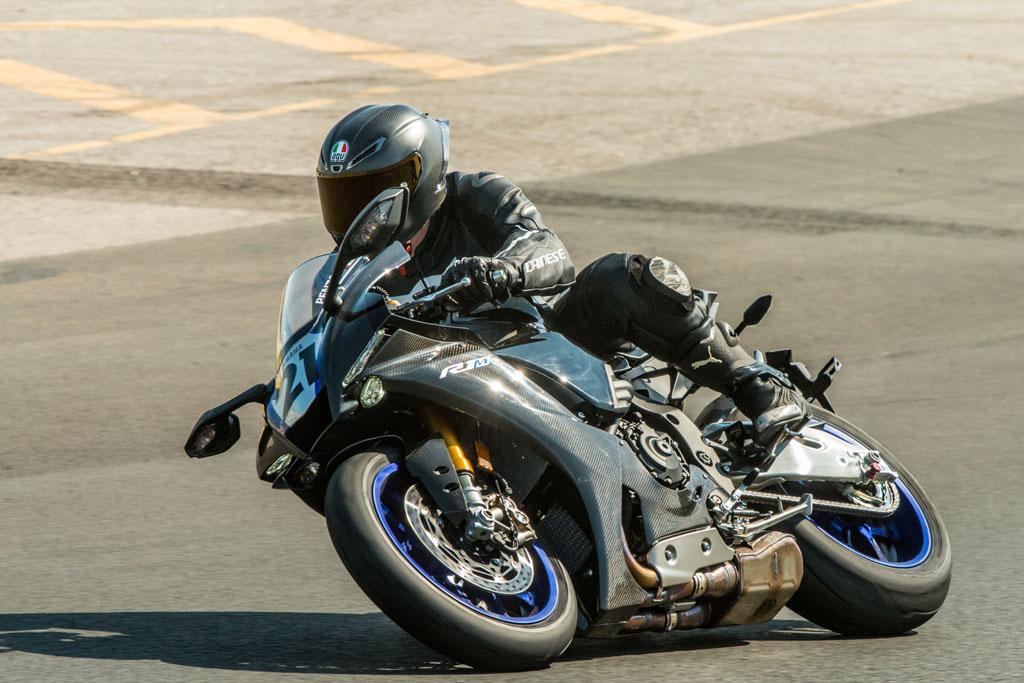
As an old-school rider, I instinctively shift between maximum horsepower and maximum torque by feel. This is the most uncorked riding experience the R1M has to offer, but in looking at the dash now with glasses and better able to read the tach section in the pit, I learn that I have been short-shifting the bike. Raise the RPM to redline between gears during the next session, and there go another couple seconds.
It seems I had been short-shifting due to something I have never seen in any press release from any manufacturer. Turns out that electronics may now restrict throttle openings often by more than 30%, even when the rider thinks to be at full-throttle in the highest power setting—presumably to help keep top speeds and emissions down while improving power through to the mid-range where most will use it. My thought is that the rising rate of thrust or power seemed to be flattening, so I was shifting too soon.
This blows my mind. It also explains why most racers now have their ECUs flashed, and go into more finite uncorking and tuning capabilities by plugging into different software through their laptops. This is one of the first things tuners allegedly do these days.
Like all other systems such as ABS and PWR, Electronic Racing Suspension (ERS) has pre- configured settings based on which of four Ride Modes is selected. After being in Mode A for a bit, we go into M1 to electronically increase rebound damping in the rear to address yoyo-type slides and improve lap times; great, but high and low speed damping controls are available only on the manual R1 suspension.
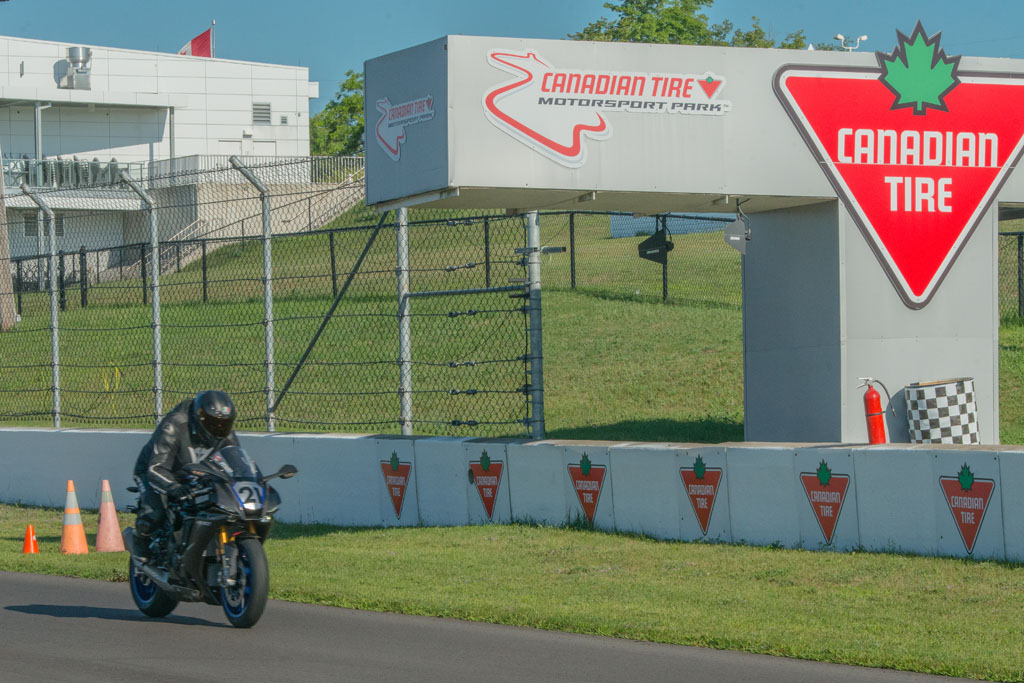
By our penultimate session, average speed on the bone stock Yamaha R1M around Canadian Tire Motorsport Park is just over 160 km/h; Jordan Szoke won pole going about 12 km/h faster on his full-out Superbike, or by going about 7 seconds per lap faster. We were within a second of my old pole-setting time, and would have gone faster had we not run out of good weather, time and tires.
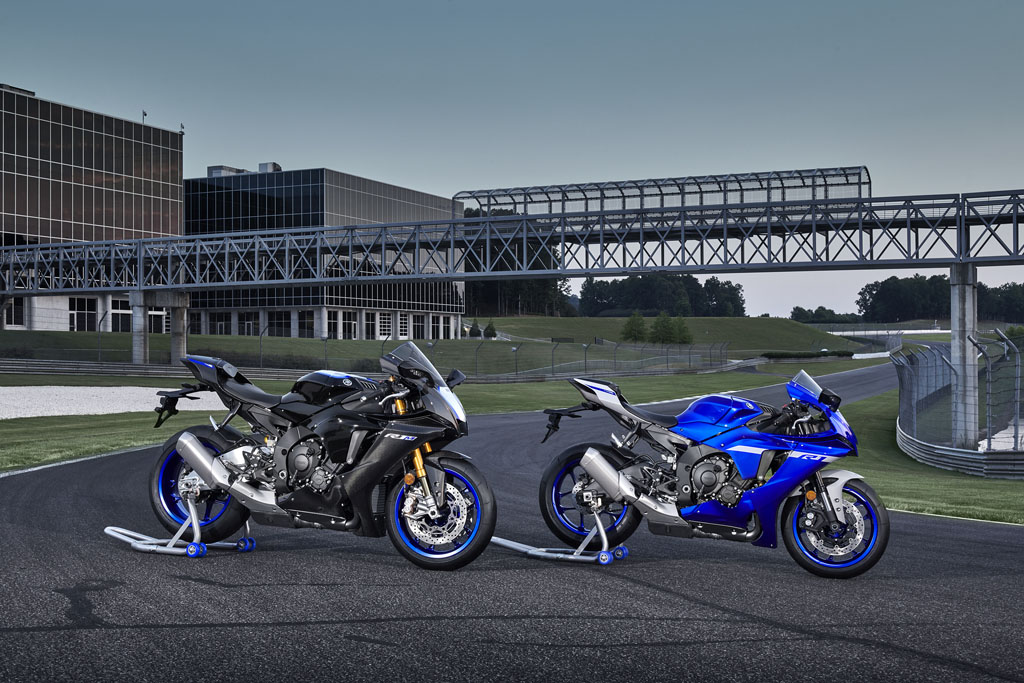
I am delighted to have ridden the R1M at Canadian Motorsport Park, and look forward to seeing what comes next from Yamaha; the base price of $27,999 gets all listed functions, and is your first step to getting to ride one like Rossi’s too. This is the same price as that found in USD for people there, so it is a bargain for any proud Canadian.
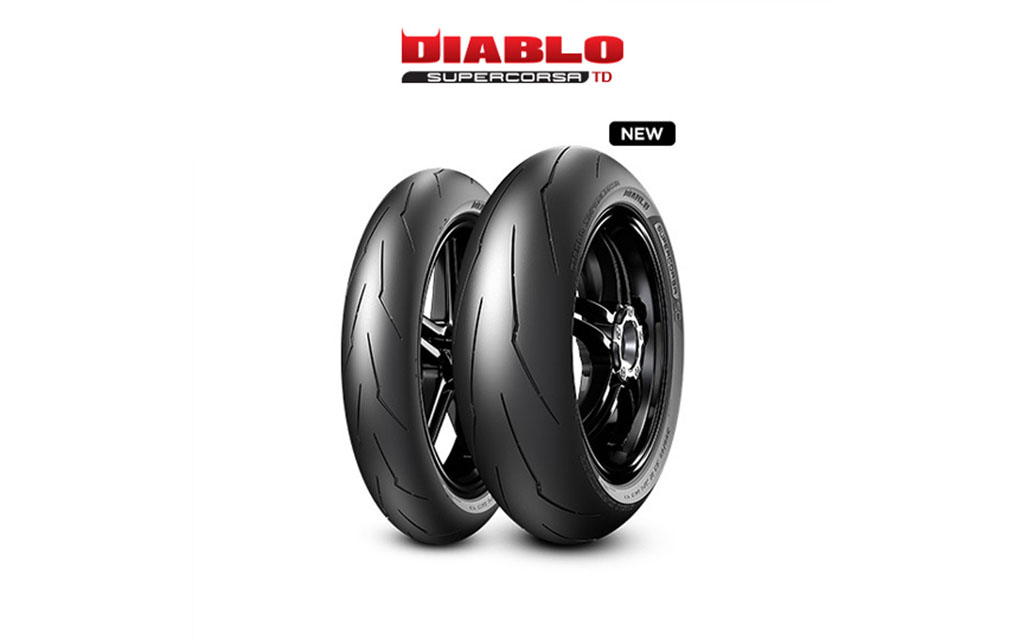
PIRELLI’S DIABLO SUPERCORSA TD TIRES
The design concept fits so well with that of Yamaha’s R1M, a fresh set was installed before even riding it. This is a street legal track day tire designed based on the Diablo Supercorsa WSBK World Supersport lineup, but with the increased track day durability.
Unlike other track day tires that are often based on street tires with more aggressive compounding and such, Pirelli took an actual DOT racing carcass and modified the compounds used. Tire warmers are not required, but I use them anyhow to reduce heat cycles.
While the track has been repaved in sections, several racers complain about increased tire wear. Aside from the rear lasting less than two full days, I experience excellent grip with predictable feedback. Even towards the end of my test with both sides of the rear past the wear markers, I feel confident mid-corner and coming onto the gas as the bike squirms a bit.
A back-to-back comparison between competing manufacturers would be required to compare, but the Pirellis tested were great, and retail in Canada for just $438 through Candian distributors listed at www.pirelliracer.com.
